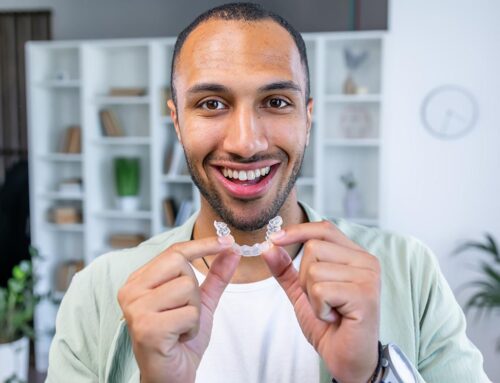A retainer is an important tool for maintaining your orthodontic health after the removal of your braces. Therefore, if you are going to have your braces removed soon you will need to consider what type of retainer you would like to use to continue your treatment, although your orthodontist will guide you in deciding what will work best for you. All retainers have advantages and disadvantages. Here is a handy guide to understanding the different types of retainers available and what pros and cons they bring to your orthodontic treatment.
Hawley Retainers
Probably the most well-known type of retainer, Hawley retainers are made of bendable wire paired with molded acrylic or plastic that fits to the top or bottom of your mouth. These retainers are easy to clean and long lasting if cared for correctly and can be made in a wide variety of colors and patterns. The primary disadvantages to Hawley retainers are their appearance and their interference with the patient’s speech.
Vacuum Formed or Essix Retainers
These retainers are made of clear plastic that is molded to conform directly to the shape of the patients’ teeth. These retainers are clear and nearly invisible and do not interfere with speech nearly as much as Hawley Retainers. They can easily be worn 24 hours a day but must be removed when eating. The downsides of these retainers are their lack of durability, they generally have a much shorter lifespan than their Hawley counterparts and are more difficult to clean. They also do not allow the teeth to naturally touch and can trap food or liquids if the teeth are not cleaned after eating and drinking.
Bonded or Fixed Retainers
This type of retainer involves brackets being bonded to the back of your teeth for long periods of treatment. These retainers require less cooperation from the patient as there is no removal or storage of the retainer, but they are not removable and can be more difficult to clean allowing plaque to more easily accumulate on teeth. Some orthodontists will use bonded retainers to begin the retainer process before switching to another, less permanent retainer option.
We hope this guide has given you a solid understanding of your retainer options and will assist you in determining which type of treatment is right for your teeth.
The Hicks orthodontic practice has been around for over 40 years, with Bryan Hicks taking over for his father. Dr. Hicks works hard to give his patients extraordinary outcomes from their orthodontic treatment.
If you have any questions about this article or need to talk to someone in the office, give us a call at (604) 922-0111.





